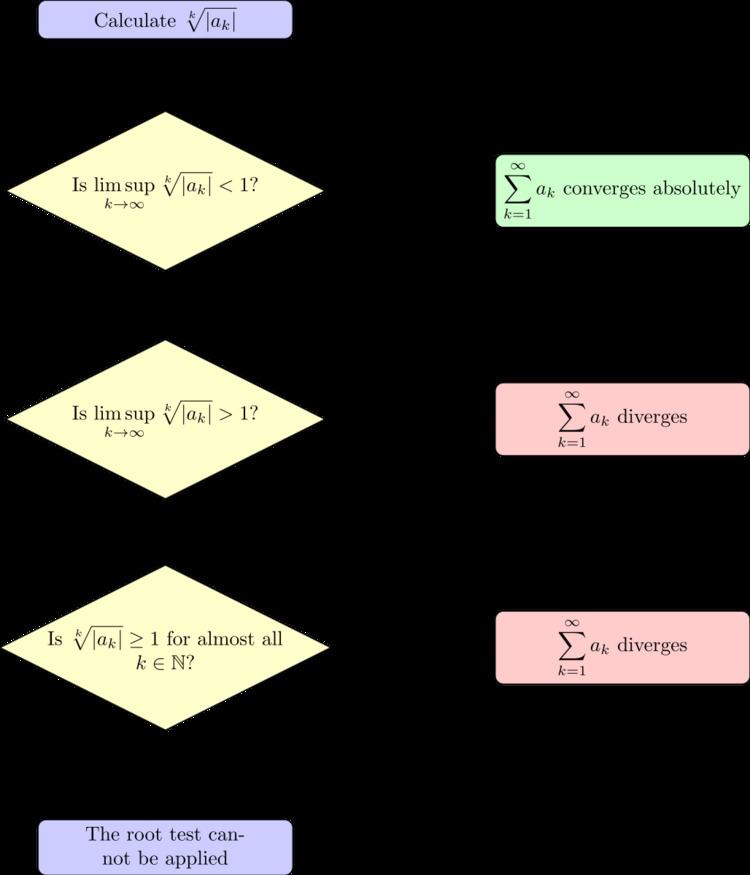 | ||
In mathematics, the root test is a criterion for the convergence (a convergence test) of an infinite series. It depends on the quantity
Contents
where
Test
The root test was developed first by Augustin-Louis Cauchy who published it in his textbook Cours d'analyse (1821). Thus, it is sometimes known as the Cauchy root test or Cauchy's radical test. For a series
the root test uses the number
where "lim sup" denotes the limit superior, possibly ∞. Note that if
converges then it equals C and may be used in the root test instead.
The root test states that:
There are some series for which C = 1 and the series converges, e.g.
Application to power series
This test can be used with a power series
where the coefficients cn, and the center p are complex numbers and the argument z is a complex variable.
The terms of this series would then be given by an = cn(z − p)n. One then applies the root test to the an as above. Note that sometimes a series like this is called a power series "around p", because the radius of convergence is the radius R of the largest interval or disc centred at p such that the series will converge for all points z strictly in the interior (convergence on the boundary of the interval or disc generally has to be checked separately). A corollary of the root test applied to such a power series is that the radius of convergence is exactly
Proof
The proof of the convergence of a series Σan is an application of the comparison test. If for all n ≥ N (N some fixed natural number) we have
If
Proof of corollary: For a power series Σan = Σcn(z − p)n, we see by the above that the series converges if there exists an N such that for all n ≥ N we have
equivalent to
for all n ≥ N, which implies that in order for the series to converge we must have
so
(since points > 1 will diverge) and this will not change the radius of convergence since these are just the points lying on the boundary of the interval or disc, so
